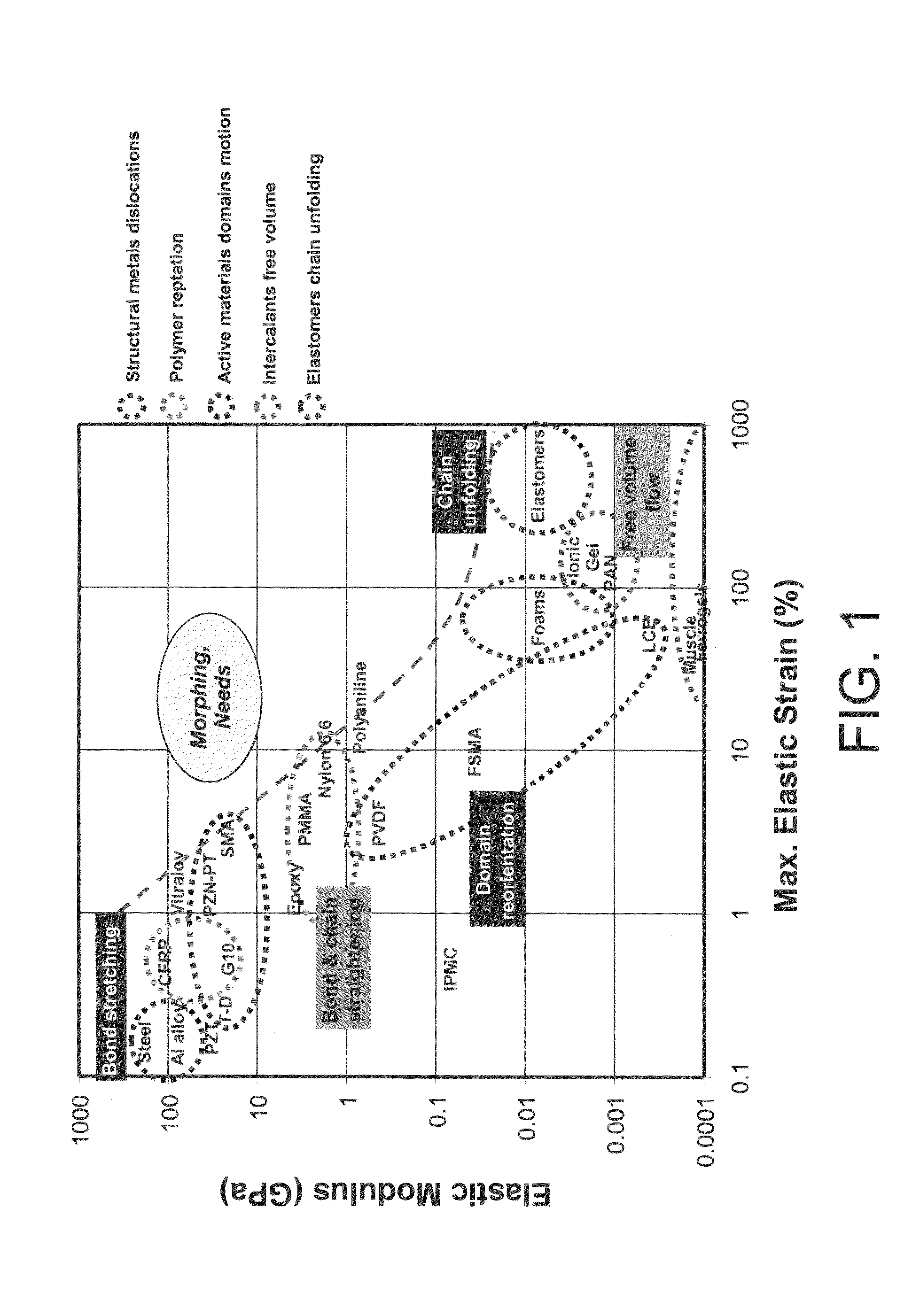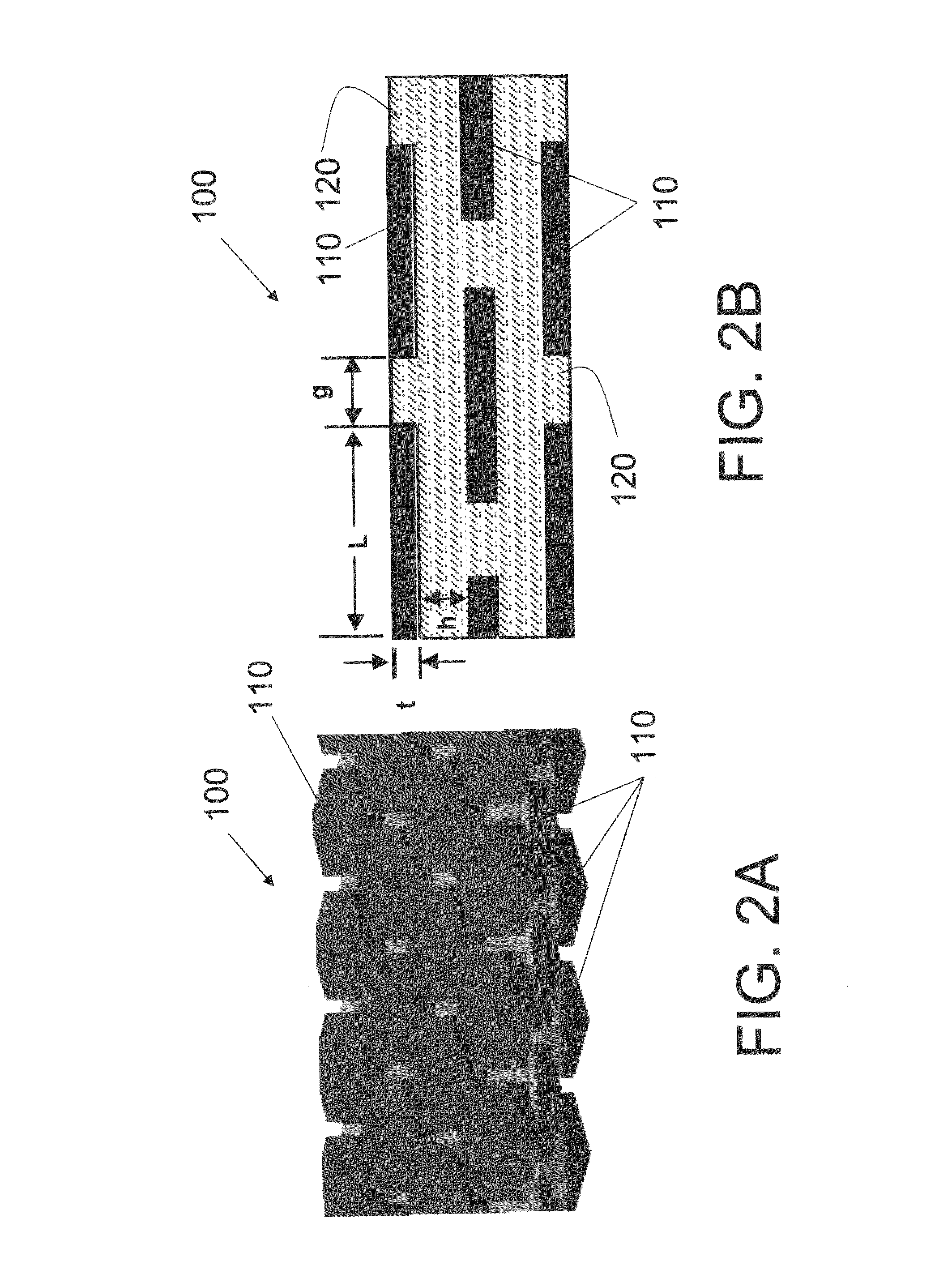Methods for creating spatially controlled composite materials
a composite material and spatial control technology, applied in the field of methods, can solve the problems of large stiffness of traditional active materials based on phase change mechanisms, limited reversible strain magnitude, and trade-off between reversible strain and stiffness that does not provide enough stiffness for structural reconfiguration, and significant penalties for structural efficiency
- Summary
- Abstract
- Description
- Claims
- Application Information
AI Technical Summary
Benefits of technology
Problems solved by technology
Method used
Image
Examples
Embodiment Construction
[0037]In the following detailed description, only certain exemplary embodiments of the present invention have been shown and described, simply by way of illustration. As those skilled in the art would realize, the described embodiments may be modified in various different ways, all without departing from the spirit or scope of the present invention. Accordingly, the drawings and description are to be regarded as illustrative in nature and not restrictive.
[0038]Embodiments of the present invention relate to a system and method for precisely controlling the three(3)-dimensional distribution of structural reinforcement elements in a polymer-matrix composite.
[0039]In one embodiment, the precise control of features at the microscale allows a manipulation of stress and strains in the composite components, which is critical to achieving high performance multifunctional materials. While an exemplary embodiment of the invention is directed to mechanically variable stiffness materials, other ...
PUM
| Property | Measurement | Unit |
|---|---|---|
| Flexibility | aaaaa | aaaaa |
| Stiffness | aaaaa | aaaaa |
| Distribution | aaaaa | aaaaa |
Abstract
Description
Claims
Application Information
 Login to View More
Login to View More - R&D
- Intellectual Property
- Life Sciences
- Materials
- Tech Scout
- Unparalleled Data Quality
- Higher Quality Content
- 60% Fewer Hallucinations
Browse by: Latest US Patents, China's latest patents, Technical Efficacy Thesaurus, Application Domain, Technology Topic, Popular Technical Reports.
© 2025 PatSnap. All rights reserved.Legal|Privacy policy|Modern Slavery Act Transparency Statement|Sitemap|About US| Contact US: help@patsnap.com



